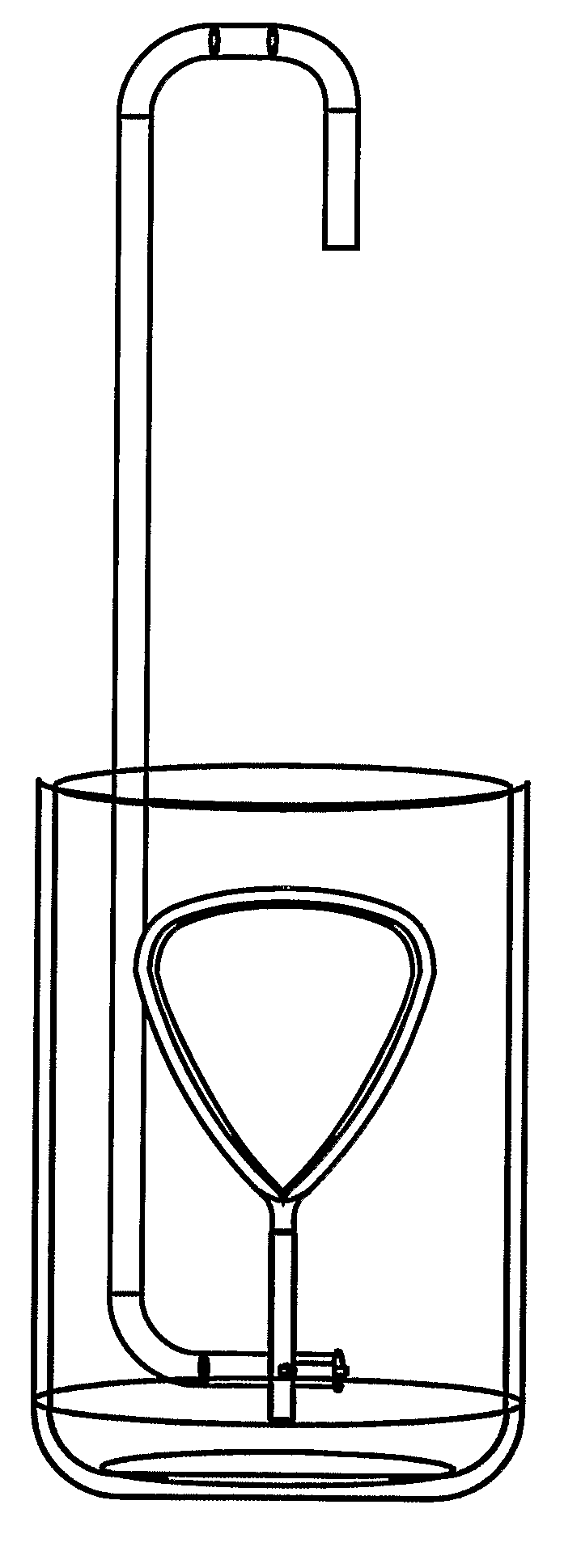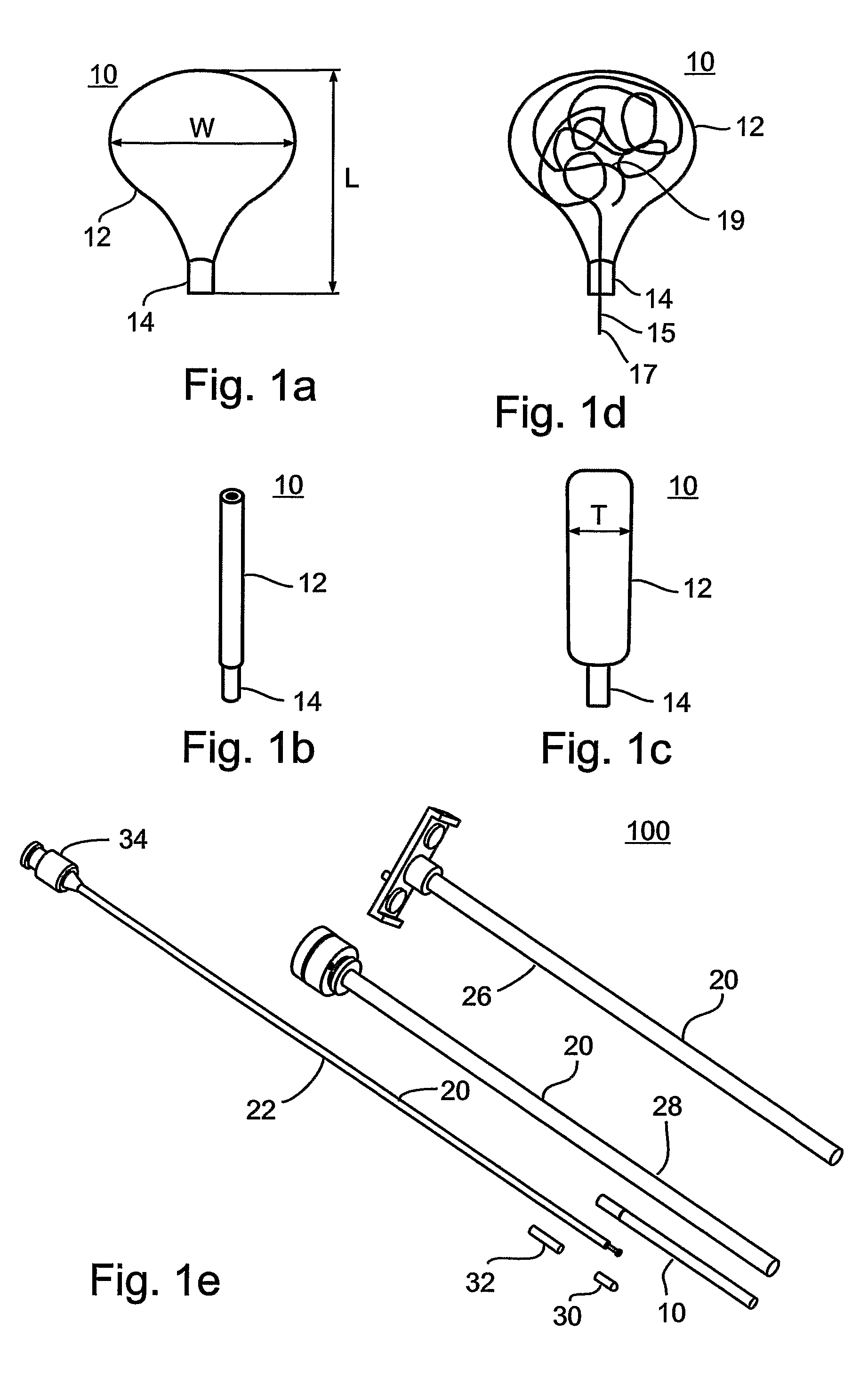Device system and method for tissue displacement or separation
a tissue and device technology, applied in the field of devices, systems and methods for tissue displacement/separation, can solve the problems of inadvertent tissue injury, inability to use the same treatment method, and inability to carry out a certain degree of risk of injury to healthy tissues, etc., and achieve the effect of convenient use in separating/displacing
- Summary
- Abstract
- Description
- Claims
- Application Information
AI Technical Summary
Benefits of technology
Problems solved by technology
Method used
Image
Examples
example 1
Bladder Fabrication
[0110]An important feature of the bladder of the present device is its ability to retain a predetermined shape once expanded. This feature is critical for optimal tissue displacement / separation and minimization of localized tissue pressure. For the same reason, the bladder of the present device is preferably fabricated with a smooth seamless external surface. To facilitate these requirements, a unique production process was formulated. The process combines two production concepts, a permutation of “lost wax” casting and dip molding.
[0111]Dip molding is used to “build” the bladder walls by dipping a pre-shaped model of the bladder in a solution made of a polymer dissolved in organic solvent. The pre-shaped model is made of materials that are later extracted from the internal volume of the bladder through its orifice. Unlike the well known “lost wax” casting method, wax cannot be used since it dissolves in organic solvents such as alcohols, chlorinated hydrocarbons,...
example 2
[0123]Prostate cancer is the most common malignancy in men; 220,000 new cases are diagnosed each year in US and 50,000 patients undergo radical prostatectomy each year in the U.S. During the last few years there is an increasing trend to perform this surgery via minimally invasive techniques such as laparoscopic radical prostatectomy.
[0124]In radical prostatectomy (using either the open or the laparoscopic approach), the device of the present invention is inserted into the space between the rectum and prostate (see FIG. 3a) using the transperineal approach which is guided by trans-rectal ultrasound. Initially a thin 22 to 18 gauge needle is introduced into this space under trans-rectal ultrasound guidance and this virtual space is enlarged by injecting 5 to 20 cc of physiological liquid such as, for example, 0.9% sterile saline. A guide wire is inserted through the needle into this space; the needle is removed and a dilator is used to enlarge the tract; an introducer ...
example 3
Cholelithasis
[0128]Tissue displacement can also be performed during laparoscopic cholecystectomy. Approximately 400.000 such cases are performed each year in U.S. mostly for cholelithasis.
[0129]In cholecystectomy the bladder is preferably an elongated (5 to 7 cm long, 3 to 5 cm wide and 1 to 2 cm thick) shape (See FIGS. 4b-c). The device is preferably introduced between the gallbladder and liver in order to separate these organs and facilitate dissection (see FIG. 4a).
[0130]The bladder is folded in an encasing sheath and connected to a feeding catheter and the device is introduced through a 5 mm port within the peritoneal cavity. Initially minimal hydro-dissection is performed between these organs to create a space, then the device folded within the encasing sheath is introduced into this space, the sheath is removed and the bladder is expanded with a liquid or a gel. The catheter is then detached from the expanded bladder and the bladder is sealed in order to prevent deflation. Cat...
PUM
| Property | Measurement | Unit |
|---|---|---|
| thickness | aaaaa | aaaaa |
| width | aaaaa | aaaaa |
| length | aaaaa | aaaaa |
Abstract
Description
Claims
Application Information
 Login to View More
Login to View More - R&D
- Intellectual Property
- Life Sciences
- Materials
- Tech Scout
- Unparalleled Data Quality
- Higher Quality Content
- 60% Fewer Hallucinations
Browse by: Latest US Patents, China's latest patents, Technical Efficacy Thesaurus, Application Domain, Technology Topic, Popular Technical Reports.
© 2025 PatSnap. All rights reserved.Legal|Privacy policy|Modern Slavery Act Transparency Statement|Sitemap|About US| Contact US: help@patsnap.com



